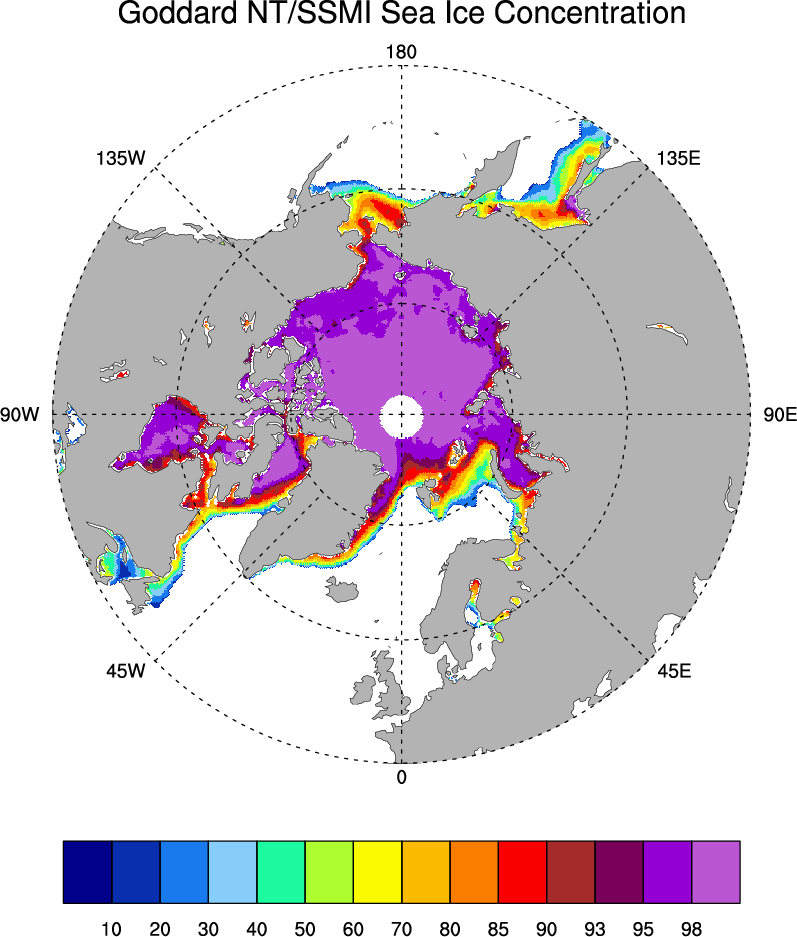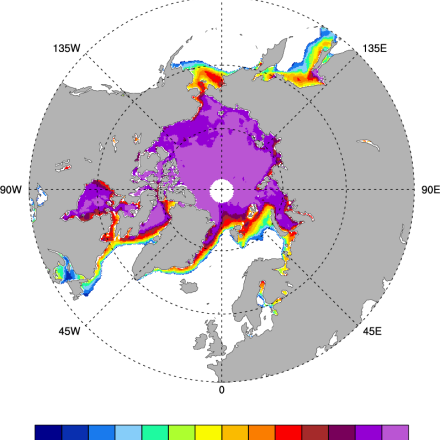Sea Ice Concentration data from NASA Goddard and NSIDC based on NASA Team algorithm

NASA Team sea ice refers to a well-known algorithm used to estimate sea ice concentration from passive microwave brightness temperatures. This page discusses the algorithm itself and the long-term data set ("NSIDC 0051") produced by scientists at NASA Goddard and distributed by NSIDC. The NASA Team data are very widely used and are a key input into other data sets including NSIDC's Sea Ice Index, NSIDC's Near-Real-Time ice concentrations (NISE1 & NSIDC 0081), HadiSST, and NOAA OI. Therefore, users should be aware of the strengths and limitations of the algorithm and the data sets derived from it. Low-biased sea ice concentrations are especially apparent in the Antarctic winter, due in part to the scattering and reflectivity of layers of snow on top of sea ice. Relatively low concentrations are also often apparent in the Arctic, affecting calculations of ice area. A "NASA Team 2" (NT2) algorithm has been developed to address some of the weaknesses of the NASA Team algorithm. However, NASA Team is used for the longest data sets as NT2 depends on the 85GHz channel that was not available on the SMMR (1978-1987).
Key Strengths
Long-term record (1979- almost present)
Consistent algorithm through time
Effects of surface temperature variations tend to cancel out due to use of brightness temperature ratios
Key Limitations
Tends to under-estimate sea ice concentration compared to ship- and ground- based observations and other algorithms, especially in the Antarctic
Weather, snow and ice layering effects may not be fully removed (see Anderson et al., 2007)
Underestimates thin ice and ice with melting or refreezing. Can interpret melt ponds as open water.
From NSIDC: Cavalieri, D., C. Parkinson, P. Gloersen, and H. J. Zwally. 1996, updated yearly. Sea Ice Concentrations from Nimbus-7 SMMR and DMSP SSM/I-SSMIS Passive Microwave Data, [list dates of temporal coverage used]. Boulder, Colorado USA: National Snow and Ice Data Center. Digital media.
unrestricted; registration requested
Cite this page
Acknowledgement of any material taken from or knowledge gained from this page is appreciated:
National Center for Atmospheric Research Staff (Eds). Last modified "The Climate Data Guide: Sea Ice Concentration data from NASA Goddard and NSIDC based on NASA Team algorithm.” Retrieved from https://climatedataguide.ucar.edu/climate-data/sea-ice-concentration-data-nasa-goddard-and-nsidc-based-nasa-team-algorithm on 2025-04-17.
Citation of datasets is separate and should be done according to the data providers' instructions. If known to us, data citation instructions are given in the Data Access section, above.
Acknowledgement of the Climate Data Guide project is also appreciated:
Schneider, D. P., C. Deser, J. Fasullo, and K. E. Trenberth, 2013: Climate Data Guide Spurs Discovery and Understanding. Eos Trans. AGU, 94, 121–122, https://doi.org/10.1002/2013eo130001
Key Figures
Other Information
SMMR, SSMI, SSMI/S
25 x 25 km
